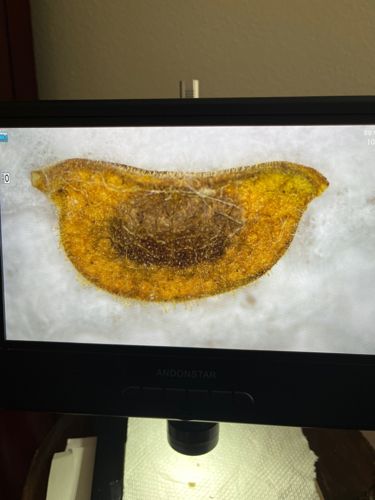Louse Egg (Nit)
Scientific Name: Phthiraptera (various species)
Order & Family: Phthiraptera (Order)
Size: Approximately 0.3-0.8 mm in length

Natural Habitat
Attached to hair shafts, typically of mammals (including humans) or birds.
Diet & Feeding
Head lice nymphs and adults feed on human blood. The nit itself is a protective casing for the developing louse embryo and does not feed.
Behavior Patterns
Nits are laid by female lice and are cemented firmly to individual hair strands, usually close to the scalp. They hatch into nymphs within 7-10 days, which then develop into adult lice. The empty egg cases may remain on the hair after hatching.
Risks & Benefits
Risks: Head lice infestations can cause itching and discomfort. Scratching can lead to skin irritation or secondary bacterial infections. They are primarily a nuisance and do not typically transmit diseases. Benefits: None to humans; ecologically, lice can be a food source for some other organisms.
Identified on: 11/11/2025